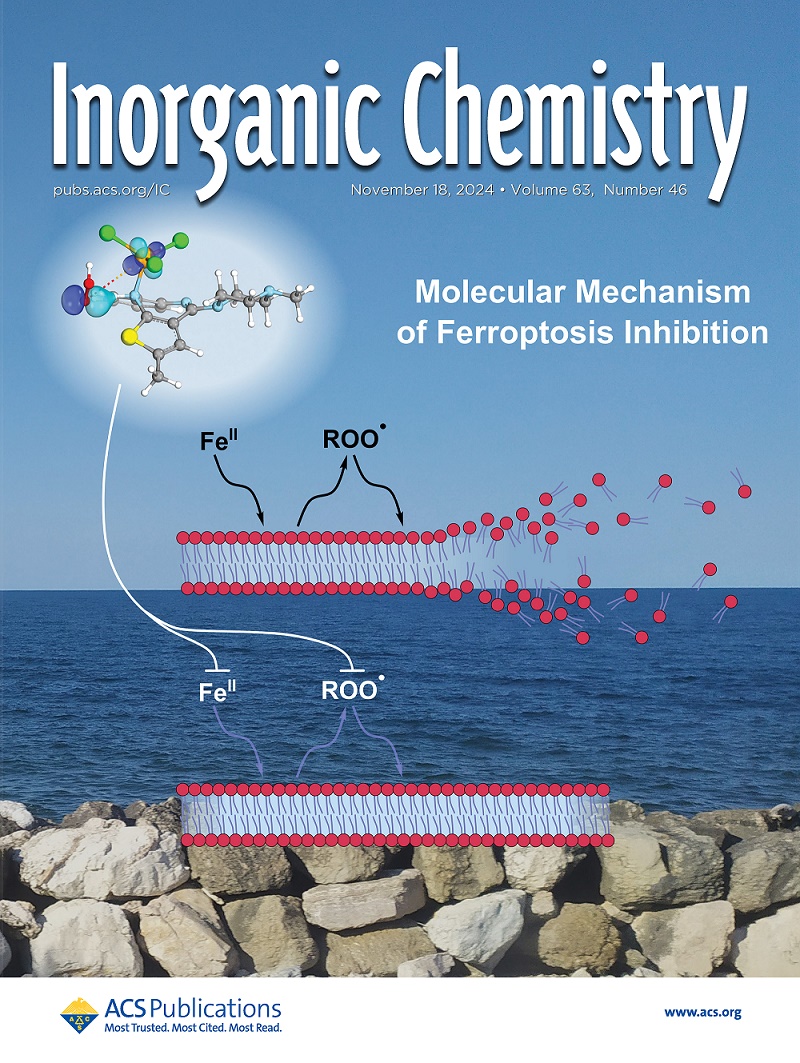光电应用的掺钛BaZrS3硫系钙钛矿:结构、光学和电学性质
IF 4.3
2区 化学
Q1 CHEMISTRY, INORGANIC & NUCLEAR
引用次数: 0
摘要
硫系钙钛矿,如BaZrS3,已经成为铅基卤化物钙钛矿的有希望的替代品,解决了毒性和不稳定性问题,同时保持了强的近带边吸收和高载流子迁移率。本研究采用柠檬酸溶胶-凝胶法制备了掺杂钛的BaZrS3 (BaZr1-xTixS3, x = 0-0.08),并在1050℃下进行硫化。结构表征证实,即使在8%的Ti掺杂下,该钙钛矿也没有相分离。拉曼光谱显示钛取代没有引起明显的结构紊乱,而扫描电镜/透射电镜分析显示均匀的形貌和伪纳米颗粒(~ 200 nm)的尺寸。XPS验证了Ba2+、Zr4+和S2 -在预期氧化态的存在。紫外可见光谱显示带隙从1.8 eV(原始)降低到1.2 eV (x = 0.08),符合Shockley-Queisser极限。霍尔效应测量显示载流子迁移率增强(x = 0.08时27.4 cm2/V·s), n型载流子浓度一致(~ 1016 cm-3),表明电导率提高。热重分析进一步证实了优异的热稳定性(<;2%的质量损失高达800°C)。这些结果强调了Ti掺杂在优化光电性能的同时保持结构完整性和稳定性的有效性。总的来说,这项工作将ti掺杂的BaZrS3定位为一种可扩展的无铅钙钛矿,可用于高效光伏应用。本文章由计算机程序翻译,如有差异,请以英文原文为准。

Titanium-Doped BaZrS3 Chalcogenide Perovskite for Photovoltaic Applications: Structural, Optical, and Electrical Properties
Chalcogenide perovskites, such as BaZrS3, have emerged as promising alternatives to lead-based halide perovskites, addressing toxicity and instability concerns while maintaining strong near-band-edge absorption and high carrier mobility. In this study, titanium-doped BaZrS3 (BaZr1–xTixS3, x = 0–0.08) was synthesized via citric acid–based sol–gel method, followed by sulfurization at 1050 °C. Structural characterization confirmed the a single-phase distorted orthorhombic perovskite without phase separation, even at 8% Ti doping. Raman spectroscopy revealed no significant structural disorder induced by Ti substitution, while SEM/TEM analyses demonstrated a uniform morphology and pseudocubicnanoparticles (∼200 nm) in size. XPS validated the presence of Ba2+, Zr4+and S2– in their expected oxidation states. UV–Vis spectroscopy showed a tunable bandgap reduction from 1.8 eV (pristine) to 1.2 eV (x = 0.08), aligning with the Shockley–Queisser limit. Hall effect measurements revealed enhanced carrier mobility (27.4 cm2/V·s at x = 0.08) and consistent n-type carrier concentrations (∼1016 cm–3), indicating improved conductivity. The thermogravimetric analysis further confirmed exceptional thermal stability (<2% Mass loss up to 800 °C). These results underscore the efficacy of Ti doping in optimizing optoelectronic properties while preserving structural integrity and stability. Collectively, this work positions Ti-doped BaZrS3 as a scalable, lead-free perovskite candidate for high-efficiency photovoltaic applications.
求助全文
通过发布文献求助,成功后即可免费获取论文全文。
去求助
来源期刊

Inorganic Chemistry
化学-无机化学与核化学
CiteScore
7.60
自引率
13.00%
发文量
1960
审稿时长
1.9 months
期刊介绍:
Inorganic Chemistry publishes fundamental studies in all phases of inorganic chemistry. Coverage includes experimental and theoretical reports on quantitative studies of structure and thermodynamics, kinetics, mechanisms of inorganic reactions, bioinorganic chemistry, and relevant aspects of organometallic chemistry, solid-state phenomena, and chemical bonding theory. Emphasis is placed on the synthesis, structure, thermodynamics, reactivity, spectroscopy, and bonding properties of significant new and known compounds.
 求助内容:
求助内容: 应助结果提醒方式:
应助结果提醒方式:


